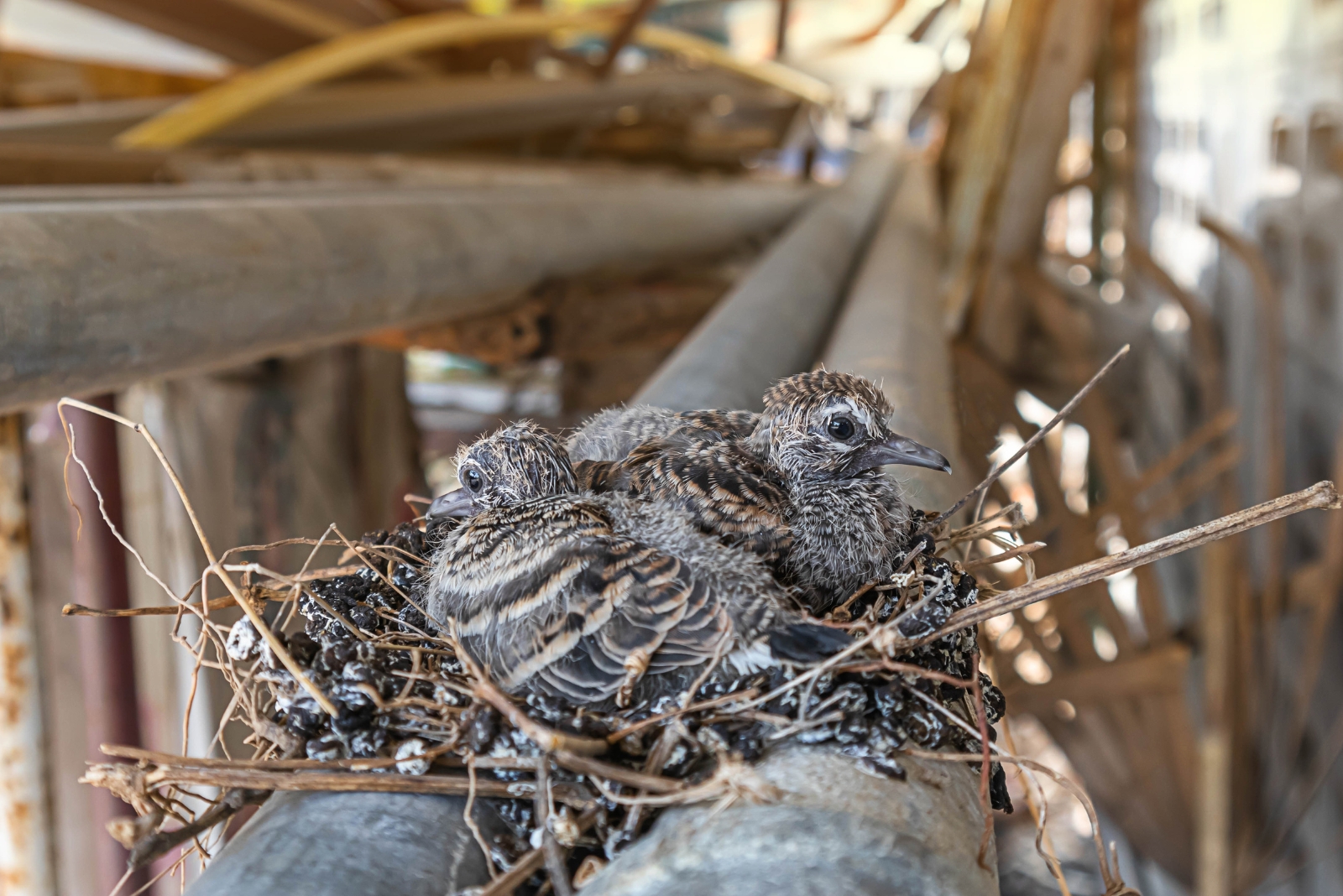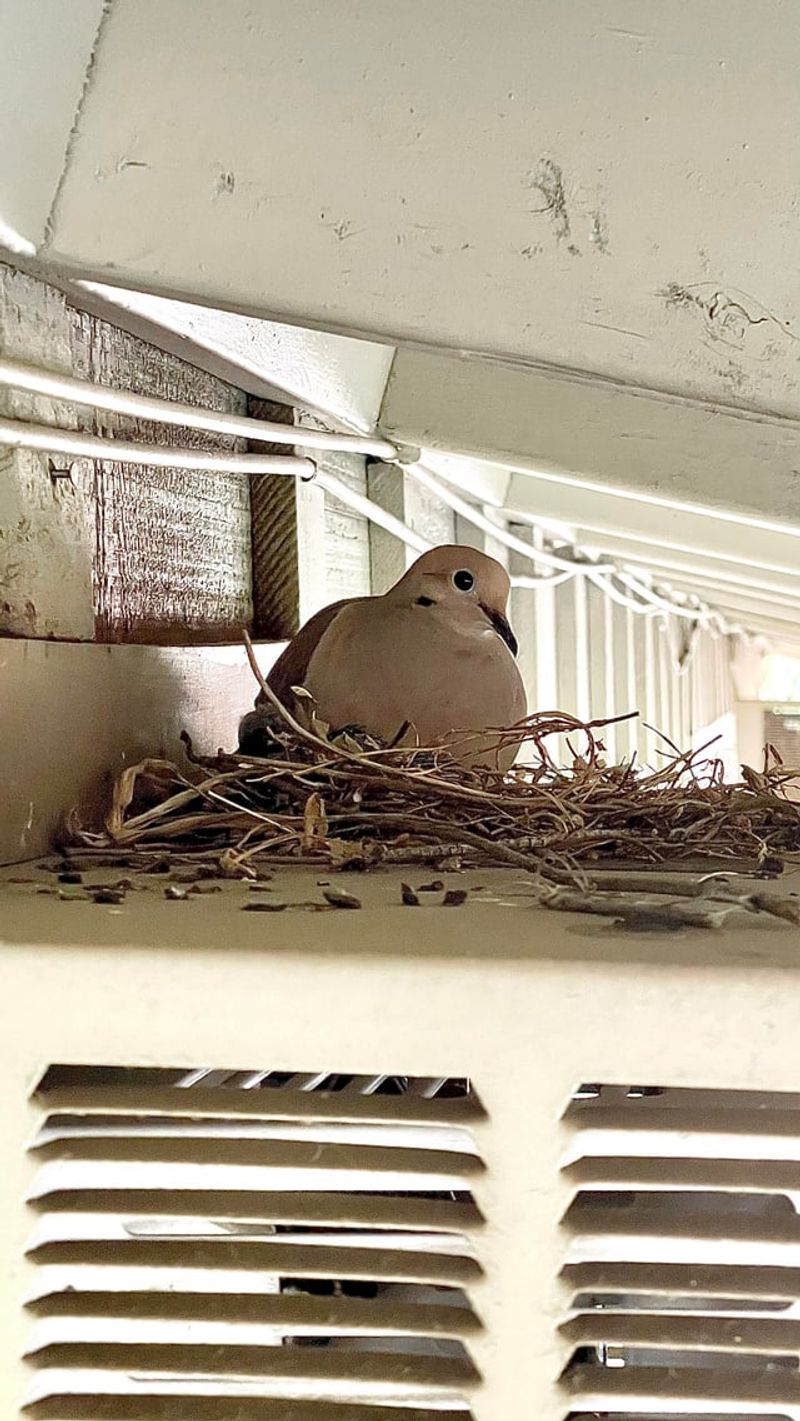California garages end up being cozy hideouts for birds more often than you’d expect, and I’ve opened a door to a surprise nest more than once. It’s sweet to see, but it also comes with a few rules and careful steps you can’t ignore.
Handling the situation gently protects both the birds and your space. With the right approach, everything stays calm and stress-free for everyone involved.
1. Check If The Nest Is Active Before Taking Action
Before doing anything, peek carefully to see if eggs or baby birds are inside. Active nests with eggs or young birds receive legal protection under federal law, even in California garages.
You cannot move or disturb these nests until the babies leave on their own. Wait patiently for the family to finish nesting, which usually takes just a few weeks during spring and summer months in California.
2. Identify The Bird Species For Proper Guidance
Different bird species have different nesting habits and protection levels. Common California garage nesters include house finches, barn swallows, and mourning doves.
Knowing which species built the nest helps you understand how long they will stay and what precautions to take. You can search online or contact local wildlife experts for identification help based on nest appearance and location within your California garage space.
3. Keep Your Distance To Avoid Stressing The Parents
Parent birds get anxious when humans come too close to their nesting area. Stress can cause them to abandon their babies or become aggressive when defending the nest.
Give the birds plenty of space by avoiding that section of your California garage whenever possible. Use alternate entrances if available, and keep noise levels down during the sensitive nesting period to help the bird family feel secure and safe.
4. Install Temporary Barriers For Your Protection
Sometimes parent birds swoop down to protect their young when you walk nearby. Setting up simple barriers like cardboard sheets or plastic tarps creates a safe zone for everyone involved.
Position these barriers to block the direct flight path between the nest and your walking area in the California garage. Make sure the barriers do not block the birds from entering or exiting, just redirect their flight pattern away from high-traffic zones you use daily.
5. Prevent Future Nesting With Smart Garage Management
Once the current bird family leaves your California garage, take steps to discourage future nesting. Close garage doors when not in use, and seal small gaps where birds might enter.
Remove old nesting materials promptly after birds depart, as some species return to previous nesting spots. Installing motion-sensor lights or reflective tape near previous nesting areas can also discourage birds from choosing your garage again next season in California.
6. Contact Wildlife Experts When You Need Help
Feeling overwhelmed or unsure about the situation is completely normal. California has many wildlife rehabilitation centers and animal control services that offer guidance for homeowners.
Professionals can assess whether the nest needs relocation due to safety concerns or structural damage. They understand local and federal laws protecting nesting birds, ensuring you handle everything correctly. Never attempt to move an active nest yourself without proper authorization and expertise from California wildlife authorities.
7. Document The Nesting Process For Educational Value
Watching baby birds grow from eggs to fledglings offers an amazing learning opportunity for families. Keep a journal or take photos from a respectful distance to track their progress throughout the weeks.
Children especially enjoy observing nature up close in their own California garage. Just remember to stay quiet and avoid flash photography that might startle the birds. This experience teaches responsibility and appreciation for wildlife sharing our spaces in suburban California neighborhoods.








